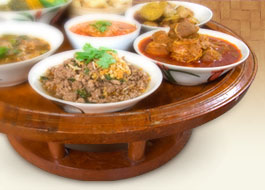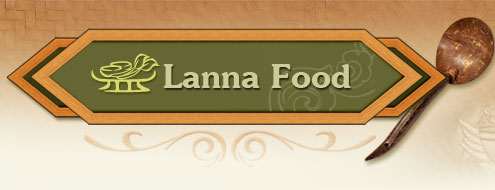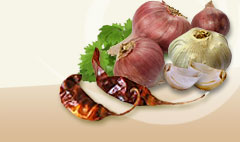Mango |
|
|
 | Mangifera Indica Linn. |
|
| |
 | Anacardiaceae |
|
| |
 | Common mango |
|
| |
 | Mamuang ban (General), ba muang (Northern), ma muang suan (Central), Pae (Lua-Chiang Mai), mak mong (Tai yai), sa kho-sa (Karen-Mae Hong Song) (Kanchana Diwiset, et al., comp., 1999, p. 205) |
|
| |
 | Tree, 10-15 m. bark blackish brown and with fissures. Leaves lanceolate, alternate, oblong, attenuate at the base, acuminate. Inflorescence of large pericles, terminal, 15-20, yellow. Drupe oblong, subreniform, green then yellow-orange; stone single. (Kanchana Diwiset, et al., comp., 1999, p.109) |
|
| |
 |

100 gm. gives 67 kilocalories energy, and contains protein 0.5 gm., fat 0.2 gm., carbohydrates 15.7 gm., fiber 2.4 gm., calcium 14.00 mg., phosphorus 2 mg., trace of iron, beta-carotene 37 mcg., Vitamin B1 10.05 mg., Vitamin B2 20.02 mg., niacin 0.2 mg. and Vitamin C 35 mg. (Priya Trairatnarong, 2004, 94). Young fruit has a sour taste so it is used instead of lime juice in yam ma muang, namphrik mamuang. It is sweet when ripe and eaten as a fruit. Young leaves and shoots are eaten with namphrik or made into sa yot ma muang. (Kanchana Diwiset, et al., comp., 1999, p. 109). Lanna people use ma muang in such dishes as sa yot ma muang. |

Bark is boiled to relieve fever, diphtheria, infections in the mouth and nose.
Leaves are boiled to drink to relieve infection in the intestine and stomach upset.
Fruit are eaten to relieve vomiting and dizziness, scurvy and acts as a laxative and a diuretic (Kanchana Diwiset, et al., comp., 1999, p. 109) Seeds are boiled to expel worms and stop diarrhea, dysentery, hemorrhoids, and gassy stomach (Priya Trairatnarong, 2004, p. 93)
|
|
| |
 |
Kanchana Diwiset, et al., comp. (1999). Phak Phuen Ban Phak Klang. Kanchana Diwiset, ed. Nonthaburi: Project on Text Development, Institute of Traditional Thai Medicine. (in thai). Priya Trairatnarong. (2004). Kamphi Phaet Samunphrai Phonlamai Samunphrai Lae Phuet Phak Suan Khrua. Bangkok: One World. (in thai). |
|
| |
|
|




